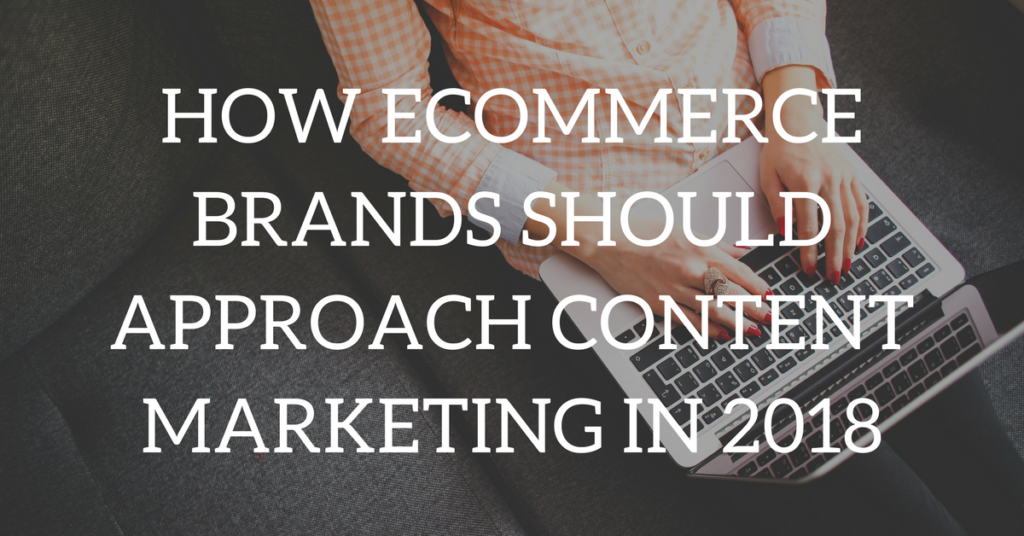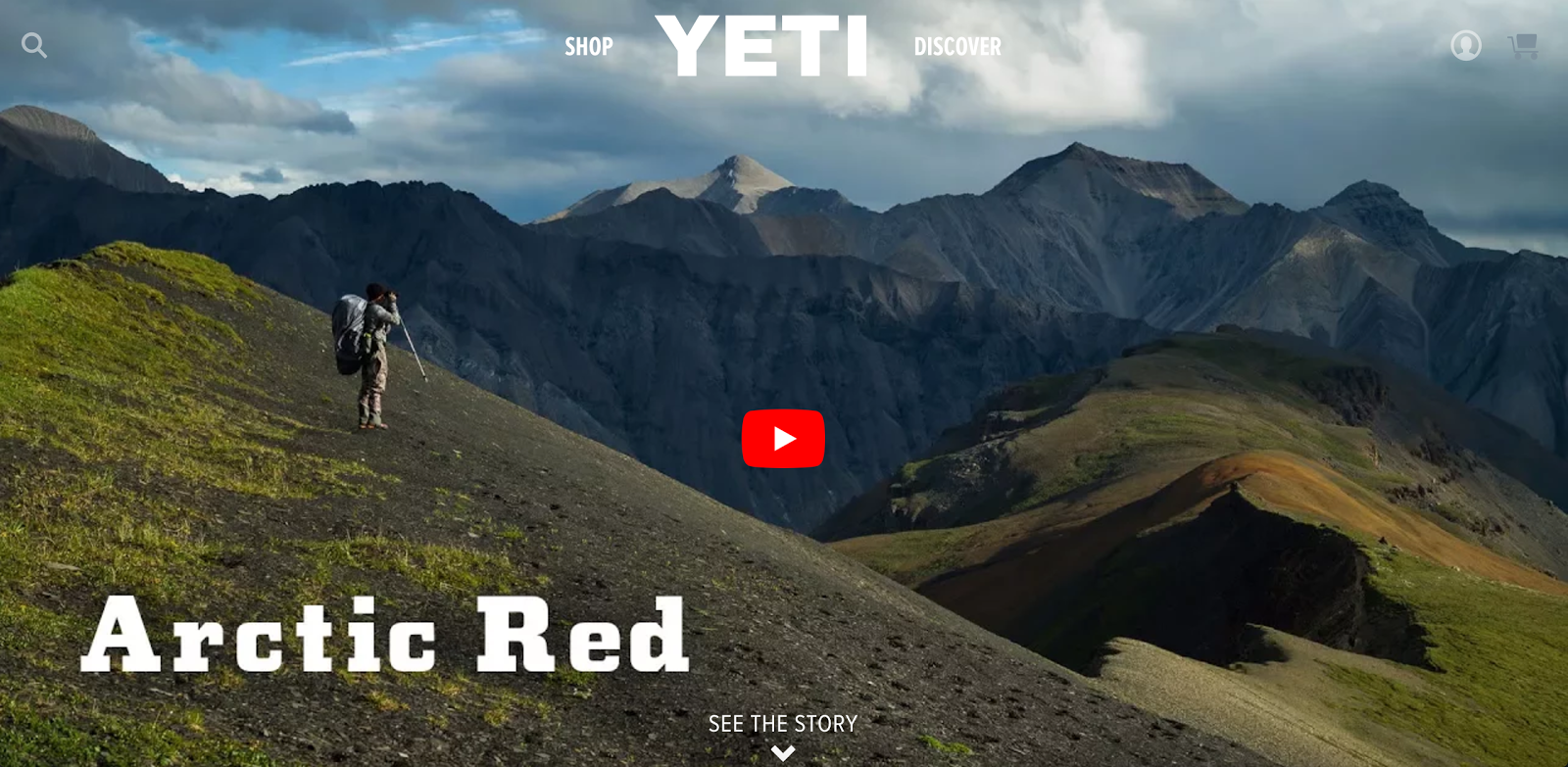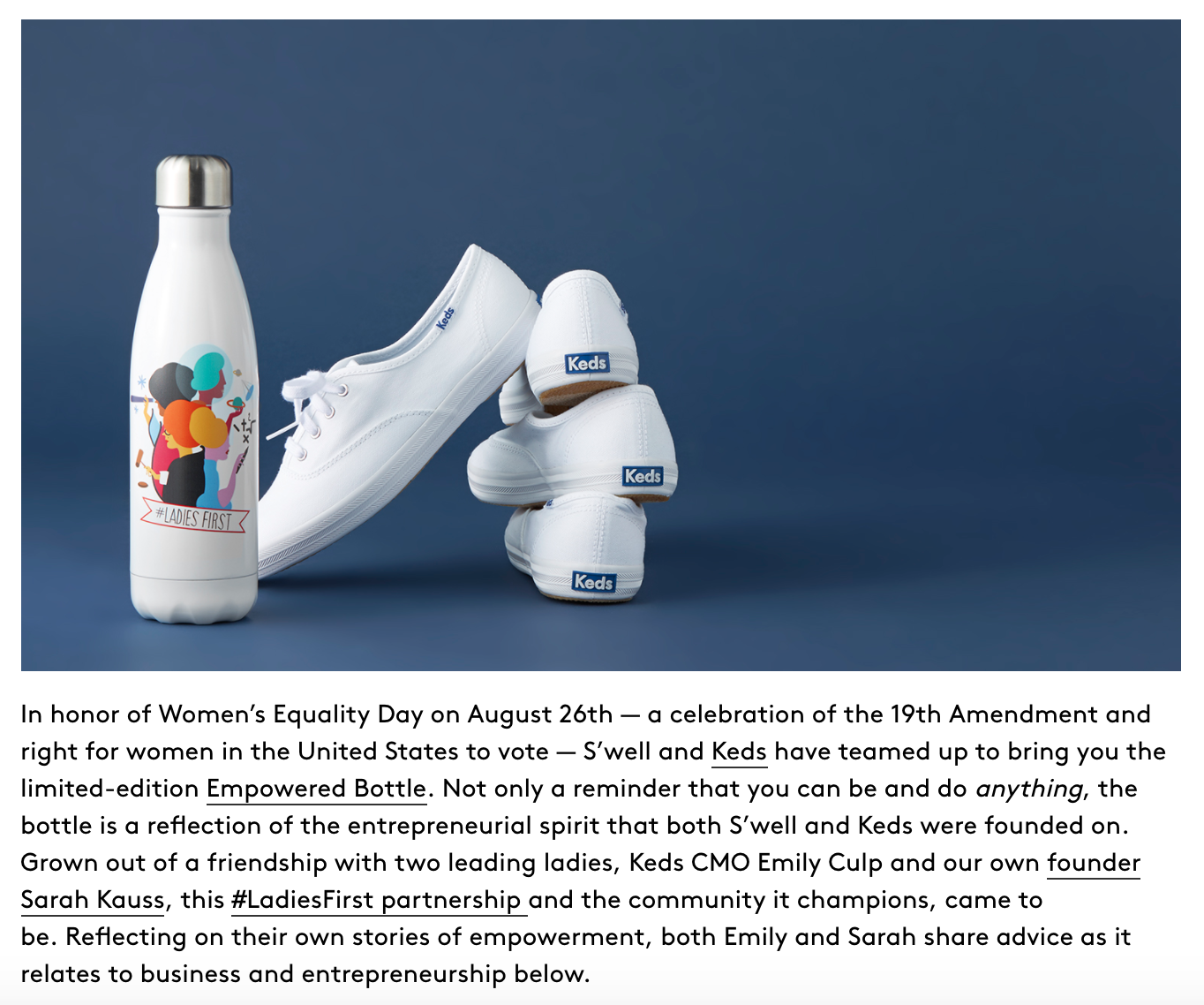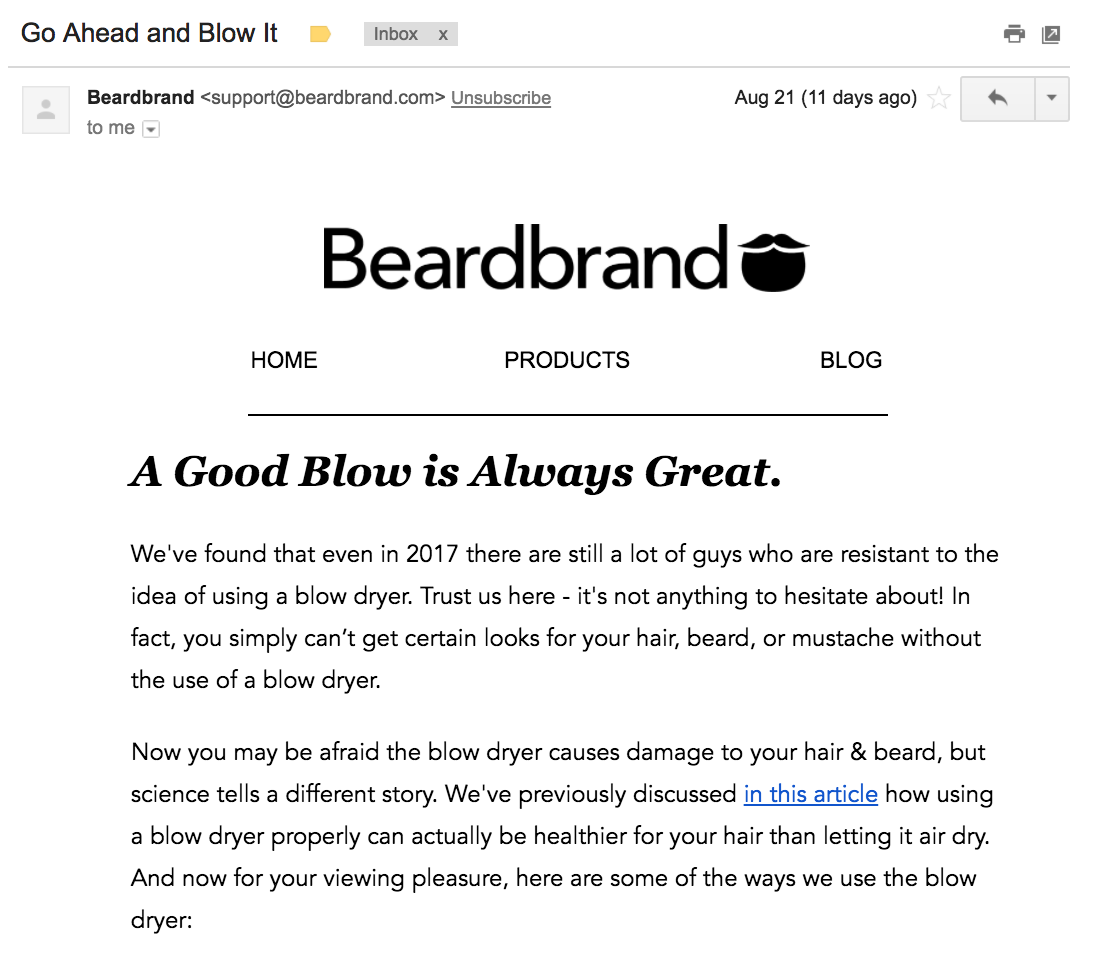Content marketing is changing. In the past, you might have been able to get real ROI from lazily publishing 500-word articles on your blog week after week, but it’s not enough anymore. In order to use content to build brand awareness, differentiate from competitors, secure customer loyalty, drive more traffic to your product pages, and increase sales for your ecommerce business, you have to approach it differently than you have been these past few years.
As you read this, you might be thinking to yourself, “what’s actually changing about content? I haven’t really noticed any drastically different strategies being implemented by competitors or other brands I follow… what do you have to know in order to continue using it as a viable lead generation and conversion channel for your business?”
In this article, I’ll spend some time outlining some of the newest ways brands are using content to differentiate and make an impact, show some real examples from well-known brands, and provide you with some actionable tips that you can use to build a better content strategy for your ecommerce business for the next year ahead.
How Content Marketing is Changing
There’s been a growing concern among many businesses, brands, and marketing professionals lately that content no longer provides the value that it once did. I think it’s a fair assessment to make. Most of what used to work 5 years ago, 3 years ago, and even 12 months ago isn’t viable anymore.
In the past, content marketing used to be all about:
- Creating content
- Building links
- Keeping a consistent weekly publishing schedule
- Hiring cheap writers or interns to produce content
- Repurposing a topic that someone else had already written about
- Sharing blog posts with followers on Facebook and Twitter
- Trying to get people to sign up for a blog updates email list
- Aggressively promoting or linking to products in blog posts
- Not being entirely sure how to measure success
But this approach isn’t effective anymore, and it surely won’t be effective going in 2018.
The best and most innovative ecommerce brands are starting to recognize this, and they’ve already started making changes to their strategy and how they think about and approach content.
For them, content marketing is all about:
- Telling stories, sharing experiences, and being more transparent
- Creating content resources and presentations that can’t be easily repurposed by another person or brand
- Focusing more on quality and actual value, as opposed to quantity or output
- Hiring skilled writers and journalists to create compelling stories and epic content resources
- Focusing more on developing authentic relationships with marketing partners and influencers, and less about using outdated promotion and outreach tactics to build links.
- Nurturing relationships with prospective customers by segmenting, personalizing, and promising to provide specific value to subscribers based on their interests and where they are in the buyer’s journey.
- Focusing less on product promotion, and more on helping people, supporting movements, and authentically engaging in the communities they serve.
- Being hyper-focused when it comes to measuring performance and success, digging into analytics, launching a/b tests, setting goals, and tracking KPIs.
If this breakdown looks like more work, it’s because it is. Content marketing is getting much more competitive, and in order to continue seeing any sort of ROI from it, you have to be willing to do more. You can’t keep doing what you know or what’s worked in the past. You have to adapt, evolve, test, and try. Otherwise, you’re just wasting your time and money.
What Should Content Marketing Look Like in 2018?
In order continue getting value from your content marketing efforts, you need to make changes. The outline provided in the previous section provides some insight into what some of those changes might be from a high-level strategic perspective, but what do the changes actually look like when put into practice?
To answer that question, it’s helpful to look at what some of the most content-innovate brands are doing right now to set themselves apart, reach more customers, and continue getting real ROI from the time and money they put into their efforts.
Here are 5 examples that will help you understand what content marketing for ecommerce should look like in 2018:
1. YETI is Going Beyond the Blog Post – I’ve mentioned them in blog posts before, but they are worth mentioning again here. In 2017, YETI made a big push to create compelling stories that align with the values and interests of their target audience. Instead of creating tired, cheesy content about coolers and where you could use one of their coolers, they choose instead to create amazing storytelling packages made up of journalism-style writing, and rich photos and videos. They’ve essentially thrown out the idea of ever doing the type of blog post that you’re used to seeing on an ecommerce website, and instead, have made the decision to create content that they know their audience will and come back to them for. You probably won’t even notice the product placement within these video stories unless you look very closely.
2. S’well is Supporting Causes & Building Partnerships – S’well is operating in a particularly competitive product category—trendy, reusable water containers. Nevertheless, they’ve been able to gain traction by securing mutually-beneficial partnerships with designers, and by teaming up with nonprofits to support specific causes they know their target audience is passionate about.
3. Beardbrand is Working with Key Influencers – Beardbrand is another ecommerce company attempting to captivate a pretty specific and niche audience: beard growers. To connect with their target customer, they’ve focused on education from the beginning. But instead of creating all the content themselves, they’ve furthered their reach and tapped into more circles by working with other well known beard influencers to share knowledge and tips about beard growth. The products used in their styling & grooming videos are their own, but they spend hardly any amount of time promoting them. Instead, they focus on providing value. Beardbrand also expertly utilizes email as a way to promote content and boost loyalty among its current and future customers.
4. Harry’s Launched An Editorial Magazine – Harry’s targets a similar audience, but they approach their content differently. They launched and a digital editorial magazine called Five O’ Clock that provides customers with tips about grooming, wellness, productivity, happiness, family, and more. Most of the content is storytelling-based, as illustrated in this example below from one of the Harry’s co-founders (click here to read it):
5. Herschel Supply Connects Through Experiences – Instead of focusing solely on creating content that features or promotes their backpacks, Herschel instead sells their audience on the experiences they could be having. They publish rich photo features on their blog that take website visitors to different parts of the world. Although you can usually find at least one product in the photography included in the feature, it’s clearly not the focus or purpose of the content, as you can see in the example below. This feature was taking visitors through a local exploration and tour of Montreal. If you look closely, you’ll notice that the bag being carried by the man in the second photo is a Herschel bag, and if you look even closer, you’ll see a link to the product page for that page below the photo. Very discreet, and not at all forceful.
Actionable Steps You Can Take Now to Prepare for Content in 2018
So, you’ve gotten an idea of what your content strategy should look like in 2018, you’ve seen some examples of brands going above and beyond, and now you might be thinking, “what steps should take now to prepare for content marketing in 2018?”
Here are some actionable takeaways:
Tip #1: Figure out what kind of stories you can collect, package, and share. Content in 2018 will be heavily focused on storytelling. As an ecommerce business owner, it’s your job to figure out what kind of stories you can collect and share with your audience. To find the right storytelling angle, ask yourself these questions:
- Who are my customers?
- What do they care about?
- What do they do in their free time?
- What values do they share?
- Who are their heroes?
- How do our products help them?
- What is our story?
- Why do we do what we do?
- Why should anyone care?
- What message are we trying to send through the stories we ultimately tell?
Try to focus in on one category when thinking about the stories you collect and share through your content (example: adventure, wellness, love, kindness, etc.).
Tip #2: Make a list of potential partners you could work with. Think about who you know and who you want to know. Make a list of partners and people you could leverage know to reach new audiences and grow your business. It could be partners who can help promote your content, or it could be partners who could collaborate on products. Once you have that list completed, create a second list of dream partners that you’d love to work with at some point. Celebrities, industry influencers, and other brands that you admire. With both lists in hand, spend the next few months reaching out to people and making connections in preparation for the new year. Make sure you have a good idea of how you’d like to partner with each person or brand that you reach out to.
Tip #3: Embrace a movement. Consumers are crazy about social entrepreneurship. They actively search out companies and brands who are working to support causes they care about. Think about the products you sell and your mission, and try to find a cause, nonprofit, or movement you can align with. Create content that promotes your commitment to the cause and spreads the word about mission.
Tip #4: Hire a journalist or photographer (or both). Stop hiring the cheapest freelance writers you can find. Go big by hiring a freelance journalist or photographer to help you craft an amazing piece of content. Remember: your goal to to create content that can’t be easily replicated or mimicked.
Tip #5: Let your product pages do the selling. Use the content on your blog to educate and nurture relationships with your customers and prospects. Don’t use it as a place to sell. Your website visitors will know how to find the products on your website. Use content to show them that you’re actively interested in educating them and helping them achieve their goals.
Tip #6: Create one amazing content piece and see how your audience responds. If you’re not sure about completely flipping your existing content strategy on its head, start small. Come up with one big, fantastic idea and execute on it. Put more time and resources into this project than all your others, and see how your audience responds. If you get good feedback and good engagement on it, consider producing more content like it on a regular basis.
Some examples of amazing content you could produce:
- A well-produced video that tells a story
- A big interview with a customer or influencer that has a great story to tell
- A photo series
- An ebook
- An email drip series
- A big landing page full of actionable tips, best practices, and stories
Tip #7: Stop doing the stuff that doesn’t work anymore. Don’t create blog posts just because that’s what you’ve always done. Think more critically and strategically about the amount of time, energy, and money you put into your content marketing efforts. If you’re not seeing traction on the type of content you’re creating, try something else.
Tip #8: Keep watching other brands. Pay attention to the brands that you think are doing a fantastic job with content. Take notes about what you like and don’t like. Borrow ideas and tactics and apply them to your own content strategy.
Tip #9: Set goals and measure everything. If you haven’t really paid much attention to the performance of your content, it’s time to start. Engagement metrics like share, likes, and comments are great to keep track of, but they don’t tell the full story. You need to also know how many people are viewing your content, where they are coming from, where they go next, and how it ultimately impacts your revenue. Set aggressive goals, evaluate your failures and successes, and make changes to your strategy accordingly on an ongoing basis.
Over to You
What other brands are doing a great job with content marketing? Share your examples in the comments below.










